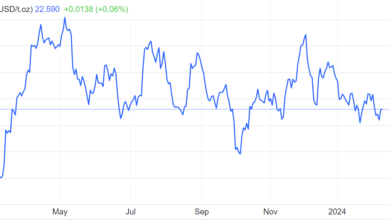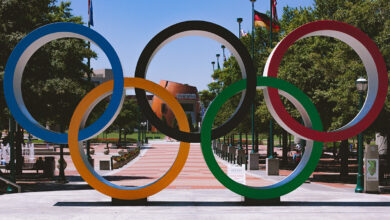Gold Demand Rose on Central-Bank, Over-The-Counter Buying
By Joe Hoppe
Central-bank buying, over-the-counter purchases and higher demand from Asia kept gold in demand over the first quarter of the year, according to a report from the World Gold Council.
Overall gold demand rose to 1,238 metric tons in the first quarter, a 3% increase on year when including over-the-counter gold purchases–the strongest first quarter since 2016, the WGC said Tuesday in a new report on gold demand trends. Gold demand excluding OTC demand was down 5% on year at 1,102 tons.
The healthy first quarter demand helped drive gold to a record quarterly average of $2,070 a troy ounce, up 10% on year and 5% on quarter. June gold futures on the New York Mercantile Exchange hit an all-time high of $2,448.8 a troy ounce on April 12, and have risen 11% in the year to date.
Central banks continued to add more gold to their reserves, adding 290 metric tons of gold over the first three months of the year, the strongest start to any year on record, the report said.
The reported buying in the three-month period was led by emerging market central banks accounting for the majority of the purchases. China’s central bank added 27 tons to its gold reserves, its 17th consecutive monthly increase, helping lift its reported gold holdings to 2,262 tons. Elsewhere, the Central Bank of Turkey bought a further 30 tons, India added 19 tons, and the National Bank of Kazakhstan 16 tons, among others.
Over-the-counter demand increased during the first quarter, with 312 tons of bars and coins purchased, a 3% increase on year. Investment demand in Asia and the Middle East showed considerable growth, while U.S. and Europe investors engaged in profit taking, keen to realize gains on the holdings.
Eastern and Western investors appear to have shifted behavior, said Louise Street, senior markets analyst at the WGC to Dow Jones Newswires. Typically, investors in Eastern markets are more responsive to the price, waiting for a dip to buy, while Western investors have historically been attracted to a rising price, tending to buy into the rally.
“Actually we’ve seen jumping on the bandwagon being more of an Eastern thing this quarter–instead, all the profit taking has been coming from the Western side,” Street said.
Overall ETF demand, however, fell on a resilient U.S. labor market, hotter than expected inflation and a distractingly strong equity market, the WGC said. ETFs saw a net 114 tons of outflows during the first quarter, equivalent to $6 billion worth.
That said, gold’s price gains over the quarter meant total assets under management actually rose 4% to $222 billion. By month, ETF outflows slowed markedly after gold began its rally, with March seeing a much smaller decline than January or February.
Street said that upside potential remains in the gold ETF space, and that the precious metal’s recent correction in prices–slipping slightly over the week ended April 26–was a healthy development that could encourage some price-sensitive buyers back into the market.
Jewelry consumption stayed relatively strong despite surging gold prices, dipping just 2% on year to 479 tons. Over the quarter, demand from India rose 4% to 95.5 tons, but this was more than offset by China demand slumping 6% to 184.2 tons. Demand pulled back in March as the price rally took off, and remains under pressure in the second quarter due to the unprecedented high prices.
Meanwhile gold supply rose 3% year on year during the first quarter to 1,238.3 tons. Mined supply hit a first-quarter record at 893 tons, while recycled supply rose 12% to 350.8 tons. Much of the mine increases came from China and Ghana, according to the WGC.
Write to Joe Hoppe at joseph.hoppe@wsj.com
(END) Dow Jones Newswires
04-30-24 0214ET





